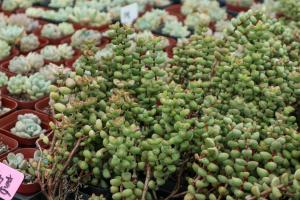Introduction
When it comes to gardening, choosing the right type of planter pot can have a significant impact on the overall health and growth of your plants. With so many options available, it can be challenging to determine which type of pot is the best fit for your gardening needs. In this article, we will explore the various types of planter pots and their pros and cons to help you make an informed decision.
Terracotta Pots
Terracotta pots are one of the most popular types of planter pots due to their affordability and classic look. These pots are made from clay and are porous, which means they allow air and water to pass through, promoting healthy root growth. However, because they are porous, they may also dry out quickly and require frequent watering. Terracotta pots are best suited for plants that prefer well-drained soil and do not require excessive watering.
Plastic Pots
Plastic pots, made of synthetic materials, are another common option for gardeners. These pots are lightweight, inexpensive, and come in a variety of shapes and sizes. Plastic pots retain moisture well and are easy to move around, making them ideal for balcony or patio gardens. However, plastic pots do not allow for air circulation, which may lead to overwatering or root rot. They also lack the aesthetic appeal of other materials.
Metal Pots
Metal pots are becoming more popular due to their unique and modern appearance. These pots are made from materials such as aluminum and steel and are corrosion-resistant, making them perfect for outdoor use. However, metal pots also absorb heat and may cause soil to dry out quickly. They also tend to be more expensive than other types of planter pots.
Ceramic Pots
Ceramic pots are a stylish and decorative option for indoor plants. These pots come in a variety of shapes, sizes, and colors, and often feature elaborate designs or patterns. Ceramic pots are non-porous, which means they retain water well and do not require frequent watering. However, because they are non-porous, they do not allow for air circulation and may cause soil to become waterlogged.
Biodegradable Pots
Biodegradable pots, made from materials such as coconut coir, peat moss, or rice hulls, are an eco-friendly option for gardeners. These pots decompose over time and can be planted directly in the ground, eliminating the need to remove plants from pots when transplanting. Biodegradable pots offer the same benefits as plastic pots, including retaining moisture and being lightweight, but without the negative impact on the environment. However, they may not be as durable as other types of planter pots and require careful handling to prevent breakage.
Conclusion
Choosing the right type of planter pot is an essential aspect of gardening that can have a significant impact on the health and growth of your plants. With the right planter pot, your plants will thrive and become beautiful additions to your indoor or outdoor space. Consider the pros and cons of each type of planter pot before making your decision, and don't be afraid to experiment with different materials to find what works best for you.

 how many times do yo...
how many times do yo... how many planted tre...
how many planted tre... how many pine trees ...
how many pine trees ... how many pecan trees...
how many pecan trees... how many plants comp...
how many plants comp... how many plants can ...
how many plants can ... how many plants and ...
how many plants and ... how many pepper plan...
how many pepper plan...































